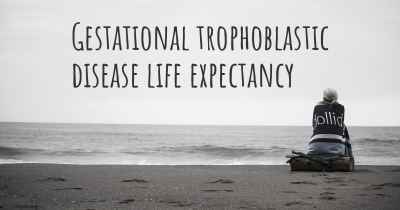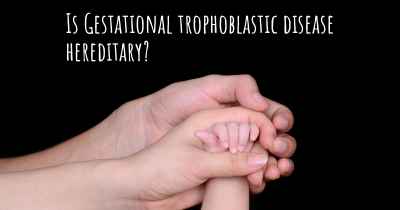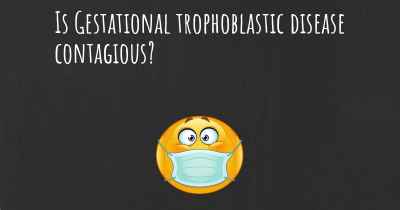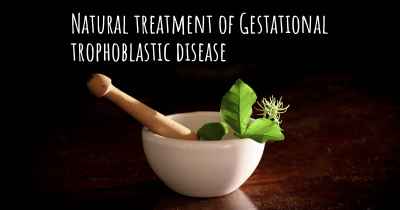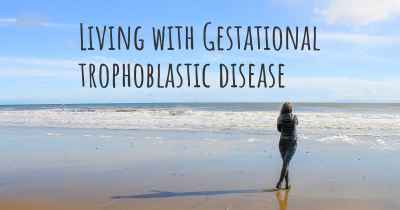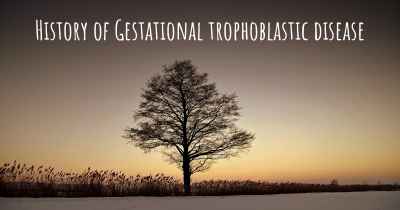Gestational trophoblastic disease diet. Is there a diet which improves the quality of life of people with Gestational trophoblastic disease?
Are you aware of a diet that can improve the quality of life of people with Gestational trophoblastic disease? Is there a diet that is suggested to avoid when having Gestational trophoblastic disease? See if there is a diet that can improve the quality of life of people with Gestational trophoblastic disease, recommended and to avoid food when having Gestational trophoblastic disease
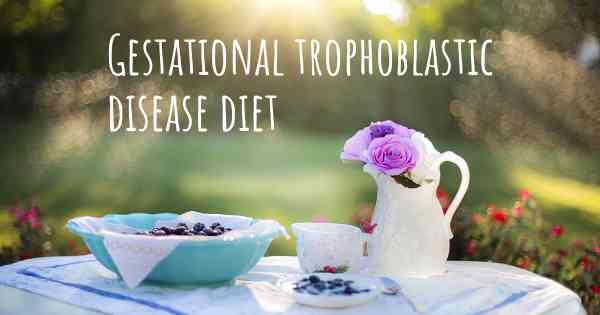
Gestational Trophoblastic Disease Diet: Improving Quality of Life
Gestational trophoblastic disease (GTD) is a rare group of pregnancy-related tumors that develop in the cells that would normally form the placenta. This condition can have a significant impact on a person's physical and emotional well-being. While there is no specific diet that can cure GTD, adopting a healthy and balanced eating plan can help improve the quality of life for individuals with this condition.
The Importance of a Nutrient-Rich Diet
A nutrient-rich diet is crucial for individuals with GTD as it supports overall health, boosts the immune system, and aids in recovery. Here are some key components to consider:
- Protein: Including adequate protein in the diet is essential for tissue repair and recovery. Good sources of protein include lean meats, poultry, fish, eggs, dairy products, legumes, and tofu.
- Fruits and Vegetables: These should form the foundation of a GTD diet. Fruits and vegetables are rich in vitamins, minerals, and antioxidants that help strengthen the immune system and promote healing. Aim for a variety of colorful options to ensure a wide range of nutrients.
- Whole Grains: Opt for whole grains such as brown rice, quinoa, whole wheat bread, and oats. These provide essential fiber, vitamins, and minerals, and help maintain stable blood sugar levels.
- Healthy Fats: Include sources of healthy fats in your diet, such as avocados, nuts, seeds, and olive oil. These fats provide energy and support the absorption of fat-soluble vitamins.
- Hydration: Staying well-hydrated is important for overall health and recovery. Aim to drink plenty of water throughout the day and limit sugary beverages.
Specific Considerations for GTD
While there are no specific dietary restrictions for GTD, there are a few considerations to keep in mind:
- Folate: Adequate folate intake is important for individuals with GTD. Include folate-rich foods such as leafy green vegetables, citrus fruits, beans, and fortified cereals in your diet.
- Iron: Some individuals with GTD may experience anemia. Including iron-rich foods like lean red meat, poultry, fish, beans, and fortified cereals can help maintain healthy iron levels.
- Calcium and Vitamin D: These nutrients are essential for bone health. Include dairy products, fortified plant-based milk, leafy green vegetables, and sunlight exposure to ensure adequate intake.
- Small, Frequent Meals: If nausea or vomiting is a symptom of GTD or its treatment, consuming small, frequent meals can help manage these symptoms and maintain proper nutrition.
Additional Lifestyle Recommendations
In addition to a healthy diet, certain lifestyle choices can further enhance the quality of life for individuals with GTD:
- Regular Physical Activity: Engaging in regular exercise, as advised by your healthcare provider, can help improve energy levels, reduce stress, and promote overall well-being.
- Stress Management: Finding effective ways to manage stress, such as practicing relaxation techniques, engaging in hobbies, or seeking support from loved ones, can positively impact emotional health.
- Regular Medical Check-ups: It is crucial to attend regular medical check-ups and follow the treatment plan prescribed by your healthcare team. They can monitor your progress, provide necessary interventions, and offer guidance specific to your condition.
- Support Network: Building a strong support network of family, friends, and support groups can provide emotional support and help navigate the challenges associated with GTD.
Remember: It is important to consult with a healthcare professional or a registered dietitian who can provide personalized guidance based on your specific needs and medical history.
Posted Mar 7, 2017 by Tiffany 400
Posted Mar 7, 2017 by Hazwani 1050
Posted Sep 26, 2017 by Cindy 2120
Posted Oct 7, 2017 by Jessica 900
Posted Oct 8, 2017 by Melody 2263
Posted Nov 6, 2017 by MCHill 3050
Posted Oct 18, 2017 by Luciene Scarabelli 1000
Posted Oct 18, 2017 by Hemille 1000
Posted Oct 18, 2017 by Meire 1000
